Wingspan 36 m | Cruise speed 842 km/h First flight January 29, 2016 | |
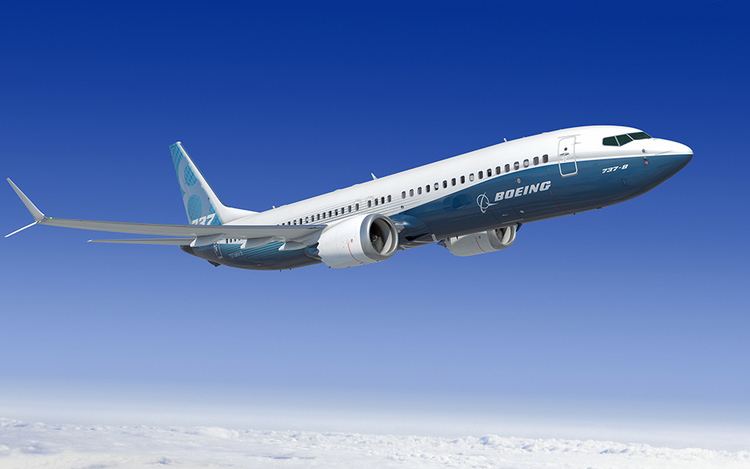 | ||
Unit cost 85,100,000–109,900,000 USD (2013) Manufacturer | ||
Southwest s new boeing 737 max
The Boeing 737 MAX is an American narrow-body jetliner series being developed by Boeing Commercial Airplanes as the successor to the Boeing 737 Next Generation series. The 737 MAX is the fourth generation of the 737 family, with the primary change being the use of the larger and more efficient CFM International LEAP-1B engines, split-tip winglets, and modifications to the airframe. As of December 31, 2016, Boeing has 3,605 firm orders for the 737 MAX series. The 737 MAX first flew on January 29, 2016, nearly 49 years after the maiden flight of the 737 on April 9, 1967. It is planned to enter service with launch operator Norwegian Air Shuttle in April 2017.
Contents
- Southwest s new boeing 737 max
- Background and program launch
- Into production
- Customers
- Design
- Winglets
- Flight deck and flight controls
- Engines and other improvements
- Variants
- 737 MAX 7
- 737 MAX 8
- 737 MAX 200
- 737 MAX 9
- 737 MAX 10X
- Boeing Business Jet
- Orders and deliveries
- References
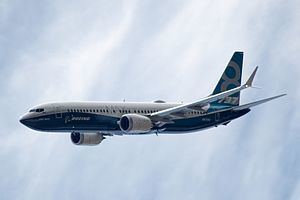
Background and program launch
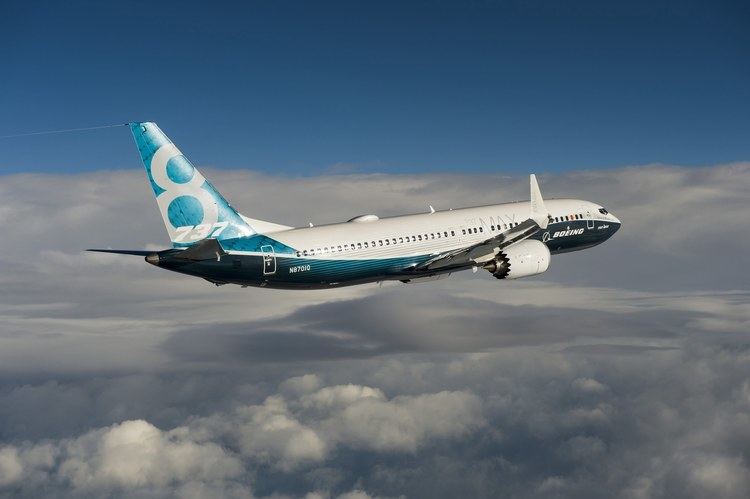
In 2006, Boeing started considering the replacement of the 737 with a "clean-sheet" design that could follow the Boeing 787 Dreamliner, but a decision on this replacement was postponed into 2011. In November 2014, it was reported that Boeing intended to replace the 737 by 2030 with a new design, possibly with a composite airframe, internally named Boeing Y1.
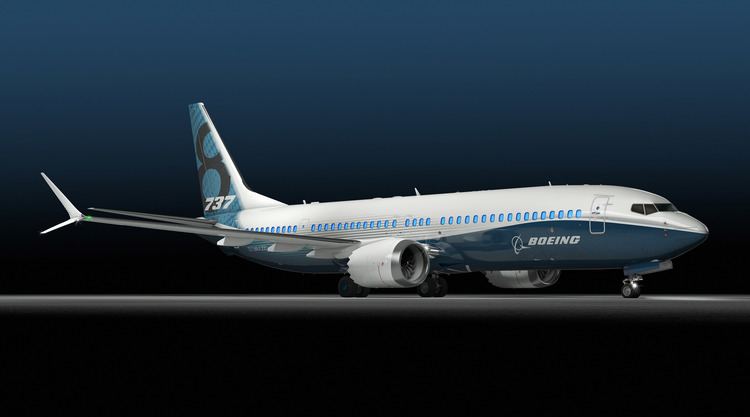
In 2010, Boeing's competitor, Airbus, launched the Airbus A320neo with new engines to improve fuel burn and operating efficiency. The decision was met with positive reaction by many airlines and they began ordering large numbers of the aircraft. Pressure from airlines for more fuel efficient aircraft forced Boeing to shelve plans for developing a replacement aircraft, the Boeing Y1, and instead focus on upgrading the 737.
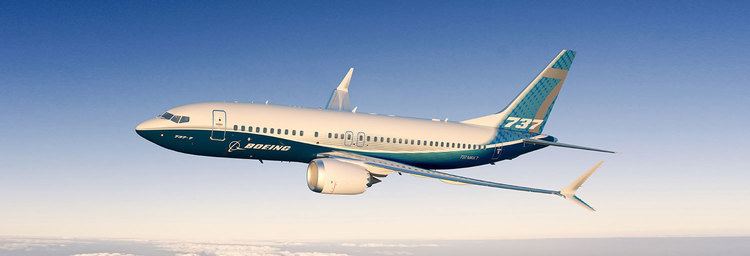
On August 30, 2011, the company's board of directors approved the 737 MAX project. Boeing predicts that the 737 MAX will provide a 16% lower fuel burn than the current Airbus A320, and 4% lower than the Airbus A320neo. Boeing expects the 737 MAX to meet or exceed the range of the Airbus A320neo.

Studies for additional drag reduction were being performed as of 2011, including revised tail cone, natural laminar flow nacelle, and hybrid laminar flow vertical stabilizer. In December 2013, Boeing stated that a recent internal audit forecasts a 14% lower fuel burn than current 737NG series aircraft.
Into production
After having increased 737 production to 42 per month in 2014, Boeing plans to increase the rate to 47 per month in 2017 and 52 per month in 2018. Spirit Aerosystems manufactures the 737 MAX's thrust reversers. A shortage of a critical component for the thrust reverser has developed; supplier GKN PLC has had difficulty producing the titanium honeycomb inner wall. While early test components met Boeing's specifications, GKN is unable to ramp up production, threatening Boeing's goal of producing up to 52 MAX versions per month by 2020.
The first 737 MAX fuselage completed assembly at Spirit Aerosystems in Wichita, Kansas, on August 13, 2015. It will be a test aircraft and eventually be delivered to launch (or first) customer Southwest Airlines. On December 8, 2015, the first 737 MAX was rolled out at Boeing's Renton, Washington, factory; this 737 MAX 8 is named "Spirit of Renton". The first flight took place on January 29, 2016. It is planned to enter service with launch operator Norwegian Air Shuttle in April 2017.
A new spar assembly line with robotic drilling machines should increases throughput by 33%, following the Electroimpact automated panel assembly line which sped up the wing lower skin assembly by 35%.
Customers
Initially, the customers for the 737 MAX were not disclosed, except for American Airlines. On November 17, 2011, Boeing released the names of two other customers – Lion Air and SMBC Aviation Capital. At that time, Boeing reported 700 commitments from 9 customers for the 737 MAX. On December 13, 2011, Southwest Airlines ordered 150 737 MAX aircraft with 150 options.
By December 2011, Boeing had 948 commitments and firm orders from 13 customers for the 737 MAX. On September 8, 2014, Ryanair signed an agreement with Boeing to purchase up to 200 new Boeing 737 MAX 200 "gamechanger" aircraft - comprising 100 firm orders and 100 options. In January 2017, aircraft leasing company GECAS ordered 75 more 737 MAX 8 airliners.
Design
As production standard, the 737 MAX will feature the Boeing Sky Interior with overhead bins and LED lighting based on the Boeing 787's interior, as well as split scimitar winglets.
Winglets
The 737 MAX is to introduce Boeing's Advanced Technology Winglet featuring a split tip. Boeing designed the device to maximize lift specifically on airplanes with wingspans that fit airport gates dimensioned to ICAO Annex 14 code letter C. The device is a direct descendant of the winglet designed for the McDonnell Douglas MD-12. Resembling a three-way hybrid between a blended winglet, wingtip fence, and raked wingtip, Boeing states that this new design should deliver an additional 1.5% improvement in fuel economy over the 10–12% improvement already expected for the 737 MAX. Aviation Partners Boeing is offering a similar "Split-Tip Scimitar" winglet for previous 737NG models.
The fuel savings could be even higher if a laminar flow surface treatment being applied meets expectations. Boeing stated in 2013 that the 737-8 MAX with the new winglet can have a 1.8% better fuel burn than a blended winglet-equipped aircraft on flights of 3,000 nautical miles (3,500 mi; 5,600 km) with 162 passengers. The advantage increases with flight length, but a short flight of 500 nmi (580 mi; 930 km) has a 1% lower fuel burn with the aircraft flying at Mach 0.79. The new winglet is 9 ft 6 in (2.90 m) high.
Flight deck and flight controls
Rockwell Collins will supply four 15.1-inch (380 mm) landscape LCD displays, as used on the 787 Dreamliner, to improve pilots' situational awareness and efficiency. The extended spoilers are fly-by-wire controlled.
Boeing plans no major modifications for the 737 MAX flight deck, as it wants to maintain commonality with the 737 Next Generation family. Boeing Commercial Airplanes CEO Jim Albaugh said in 2011 that adding more fly-by-wire control systems would be "very minimal".
Engines and other improvements
Boeing spent most of 2011 evaluating two fan diameters of the CFM International Leap-1B engine: 66.1 in (168 cm) or 68.1 in (173 cm), both of which would require few changes to the landing gear to maintain a 16.9 in (42.9 cm) ground clearance beneath the engines. Albaugh stated the larger fan diameter would produce less fuel burn, but because it is bigger, it produces more drag and is heavier, and would need more extensive airframe changes.
Both fan diameters are an increase from the 61.8 in (157 cm) CFM56-7B engine on the Boeing 737 Next Generation. The updated airliner is also expected to feature external nacelle chevrons for noise reduction, similar to those on the 787 and 747-8. While the smaller Leap-1B engine would have a lower bypass ratio and higher specific fuel consumption (SFC) than the baseline 78 in (198 cm) Leap-X and 80.7 in (205 cm) Pratt & Whitney PW1100G engine options for the A320neo, the smaller engine will weigh less and create less drag on the airframe. The 66.1 in (168 cm) engine integrated on the airframe would offer an SFC improvement of 10–12% over the current 737NG CFM56-7B engine.
In November 2011, Boeing selected the 68.1 in (173 cm) fan diameter. Because of the larger fan diameter compared to the 737 Next Generation family, the nose landing gear will have to be lengthened by 6–8 inches (15–20 cm) to maintain the required ground clearance. Firm configuration for the 737 MAX is currently scheduled for 2013. On May 17, 2012, Boeing further modified the fan diameter with an increase to 69.4 inches (176.3 cm). The larger fan will be paired with a smaller engine core than previously identified as part of a series of minor design changes before the final configuration is set in mid-2013.
There will also be a new digital regulator for the engine bleed air systems to improve its reliability. The larger engine is cantilevered ahead of and slightly above the wing.
The 737 MAX is to have a new low-drag tail cone and the laminar flow engine nacelle lipskin is a GKN Aerospace one-piece, spun-formed aluminum sheet inspired by the 787.
Variants
There are three main variants of the new family, the 737 MAX 7, 737 MAX 8 and 737 MAX 9 which are based on the 737-700, -800 and -900ER, respectively, the best-selling versions of the 737 Next Generation family. Boeing has stated that the fuselage lengths and door configurations from the Boeing 737 Next Generation family will be retained on the first three 737 MAX variants.
737 MAX 7
At the Farnborough Air Show in July 2016, Boeing announced the redesign of the MAX 7 derived from the MAX 8, accommodating two more seat rows than the 737-700 for 138 seats, up 12 seats. The redesign uses the 737-8 wing and landing gear; a pair of overwing exits rather than the single-door configuration; a 46-inch-longer aft fuselage and a 30-inch-longer forward fuselage; structural re-gauging and strengthening; and systems and interior modifications to accommodate the longer length. Boeing plans to improve its range from 3,850 nmi (4,430 mi; 7,130 km) to 3,915 nmi (4,505 mi; 7,251 km) after 2021.
737 MAX 8
The first variant developed in the 737 MAX series, the MAX 8 will replace the 737-800 with a longer fuselage than the MAX 7. Boeing plans to improve its range from 3,515 nmi (4,045 mi; 6,510 km) to 3,610 nmi (4,150 mi; 6,690 km) after 2021. On July 23, 2013, Boeing completed the firm configuration for the 737 MAX 8.
737 MAX 200
In September 2014, Boeing launched a high density version of the 737 MAX 8, the 737 MAX 200, named for seating for up to 200 passengers in a single-class high-density configuration with slimline seats: an extra exit door is required because of the higher passenger capacity. Boeing states that this version will be 20% more cost efficient per seat than current 737 models, and will be the most efficient narrow-body on the market when delivered, including 5% lower operating costs than the 737 MAX 8. Three of eight galley trolleys are removed to accommodate more passenger space. A 100 aircraft order with Ryanair was completed on December 1, 2014.
737 MAX 9
The 737 MAX 9 will replace for the 737-900 with a longer fuselage than the MAX 8. Boeing plans to improve its range from 3,510 nmi (4,040 mi; 6,500 km) to 3,605 nmi (4,149 mi; 6,676 km) after 2021. Lion Air is the launch customer with an order for 201 in February 2012; the first MAX 9 (LN 6250) is expected to make its first flight in April 2017. Its roll out is planned for March 7, 2017.
737 MAX 10X
As the MAX 9 has been outsold five-to-one by the Airbus A321neo, Boeing is studying the feasibility of a further stretch with the proposed MAX 10 but this would need a larger engine, stronger wing, and telescoping landing gear. A simpler, lower-risk derivative would be a modest stretch of 6–7 ft (1.83–2.13 m) for a length 143–144 ft (43.6–43.9 m), seating 12-18 more passengers for 192-198 in dual class or 226-232 in single class. It would need an uprated 31,000 lbf (140 kN) CFM LEAP-1B that could be available by 2019 or 2020 and would likely require a simple landing gear modification to move the rotation point slightly aft.
In early 2017 Boeing finalized a design with a 66 in (1.7 m) stretch, enabling 230 seats in a single class or 189 in two-class capacity, compared to 193 for the A321neo: the modest stretch enables to retain the existing wing and CFM Leap 1B engine, and could be introduced as soon as 2020 with a trailing-link main landing gear as the only major change. In mid-January 2017, Boeing gave its sales team the authority to offer to its customers the MAX 10X to better compete with the Airbus A321neo. Boeing prospects 737-900 operators and 737 Max 9 customers like United Airlines, Delta Air Lines, Alaska Airlines, Air Canada, Lion Air and Chinese airlines.
Boeing Business Jet
The BBJ MAX 8 and BBJ MAX 9 are proposed business jets variants of the Boeing 737 MAX 8 and 9 with new CFM LEAP-1B engines and advanced winglets providing 13% better fuel burn than the Boeing Business Jet; the BBJ MAX 8 will have a 6,325 nmi (7,279 mi; 11,714 km) range and the BBJ MAX 9 a 6,255 nmi (7,198 mi; 11,584 km) range. The BBJ MAX 7 was unveiled in October 2016 with a 7,000 nmi (8,100 mi; 13,000 km) range and 10% lower operating costs than the original BBJ while being larger.
Orders and deliveries
The 737 MAX has firm orders totaling 3,605 as of December 31, 2016.
